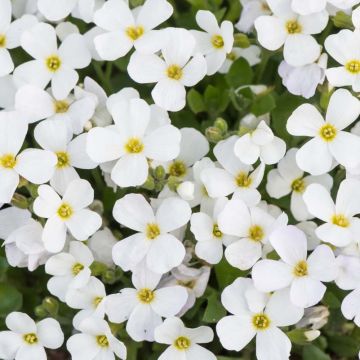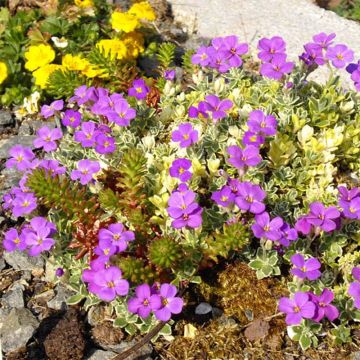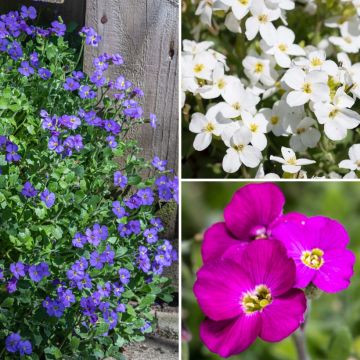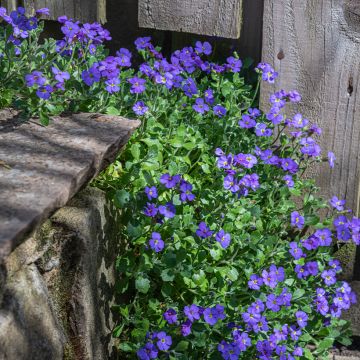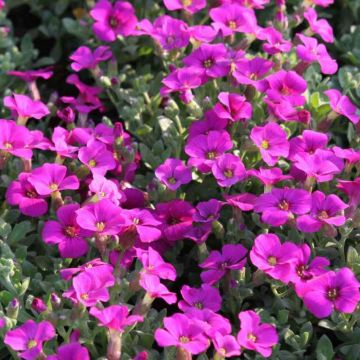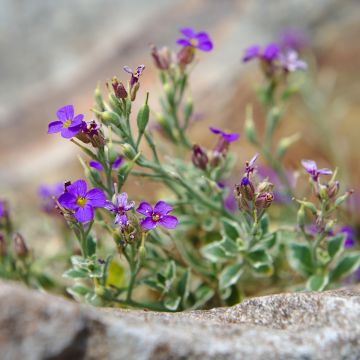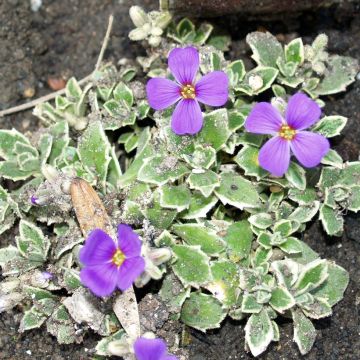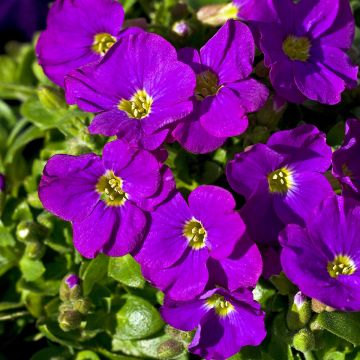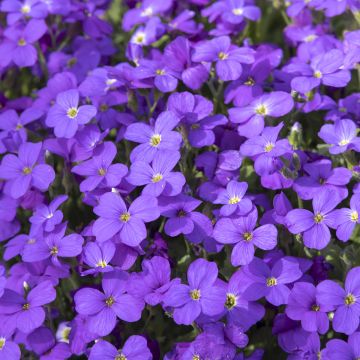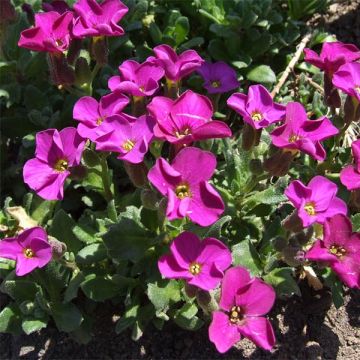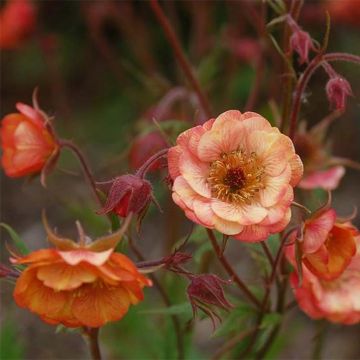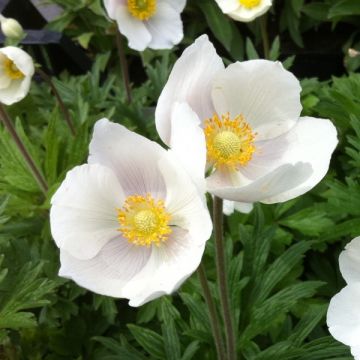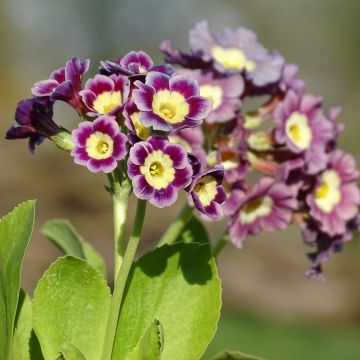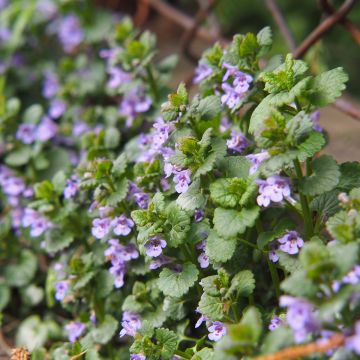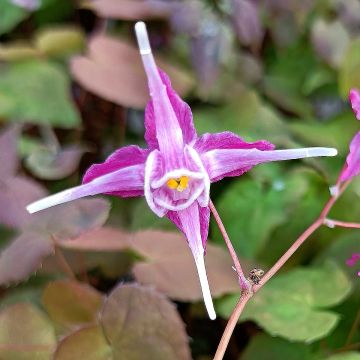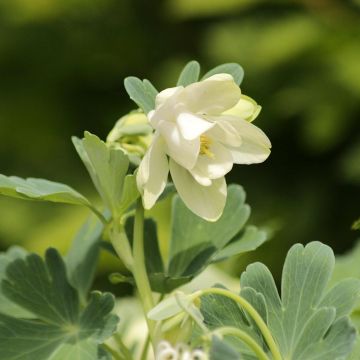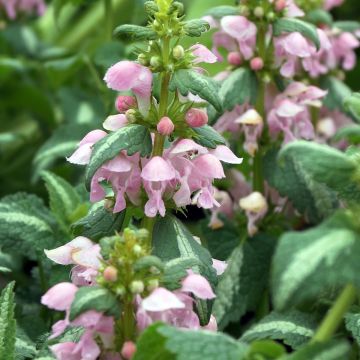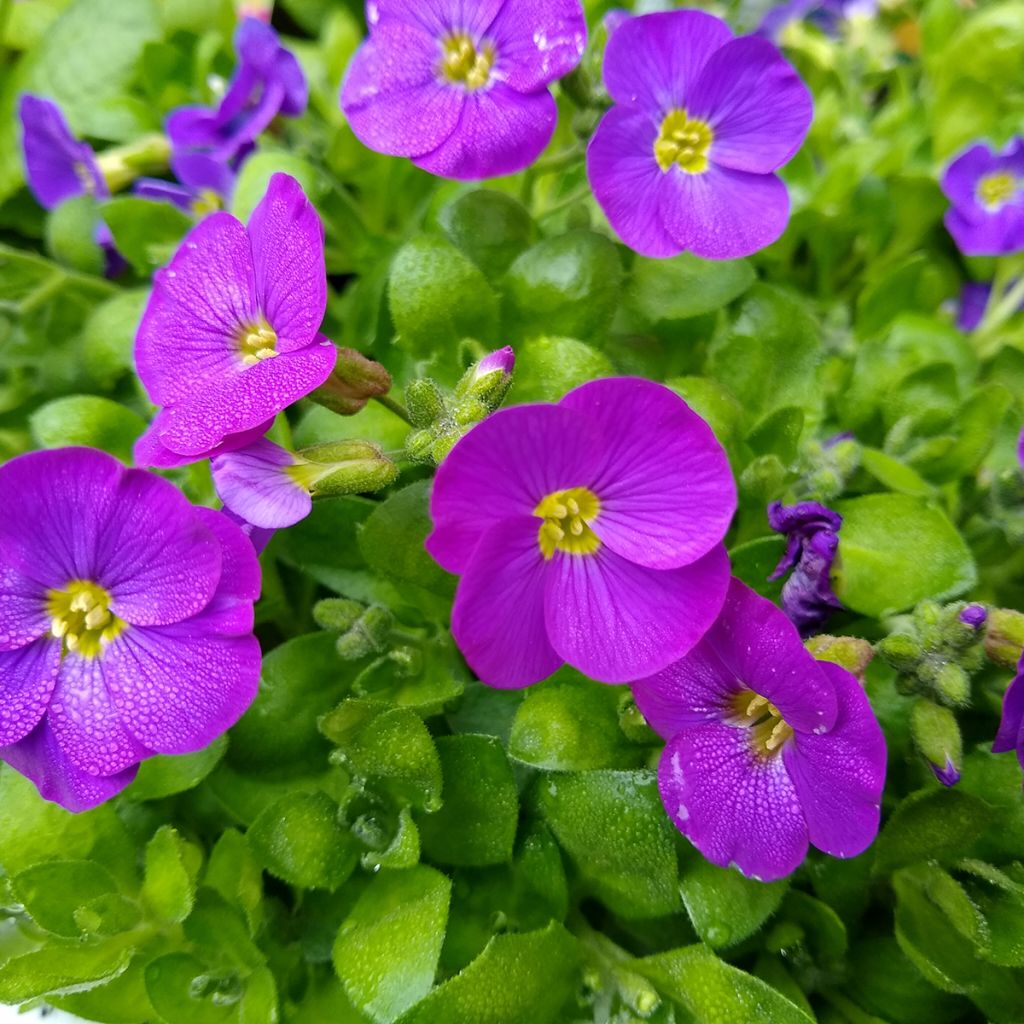

Aubrieta gracilis Kitte Blue
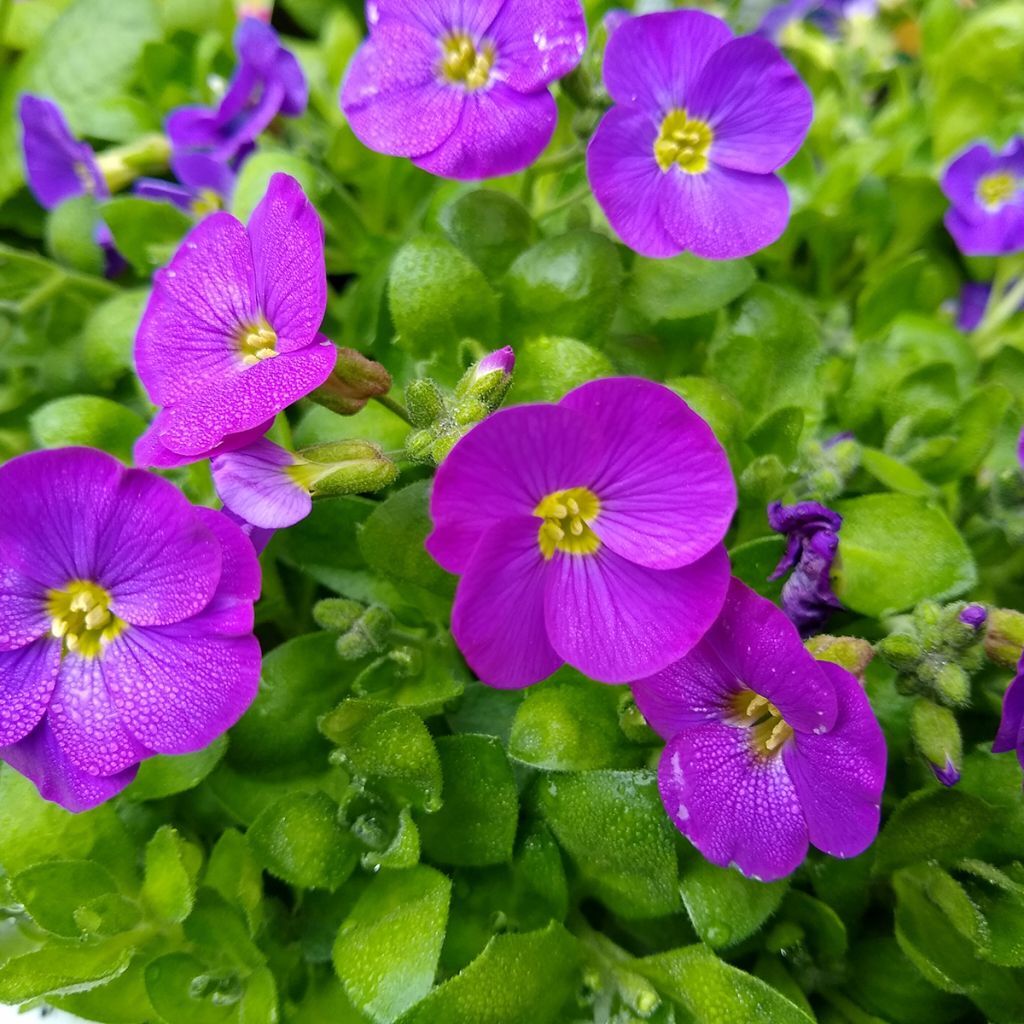

Aubrieta gracilis Kitte Blue
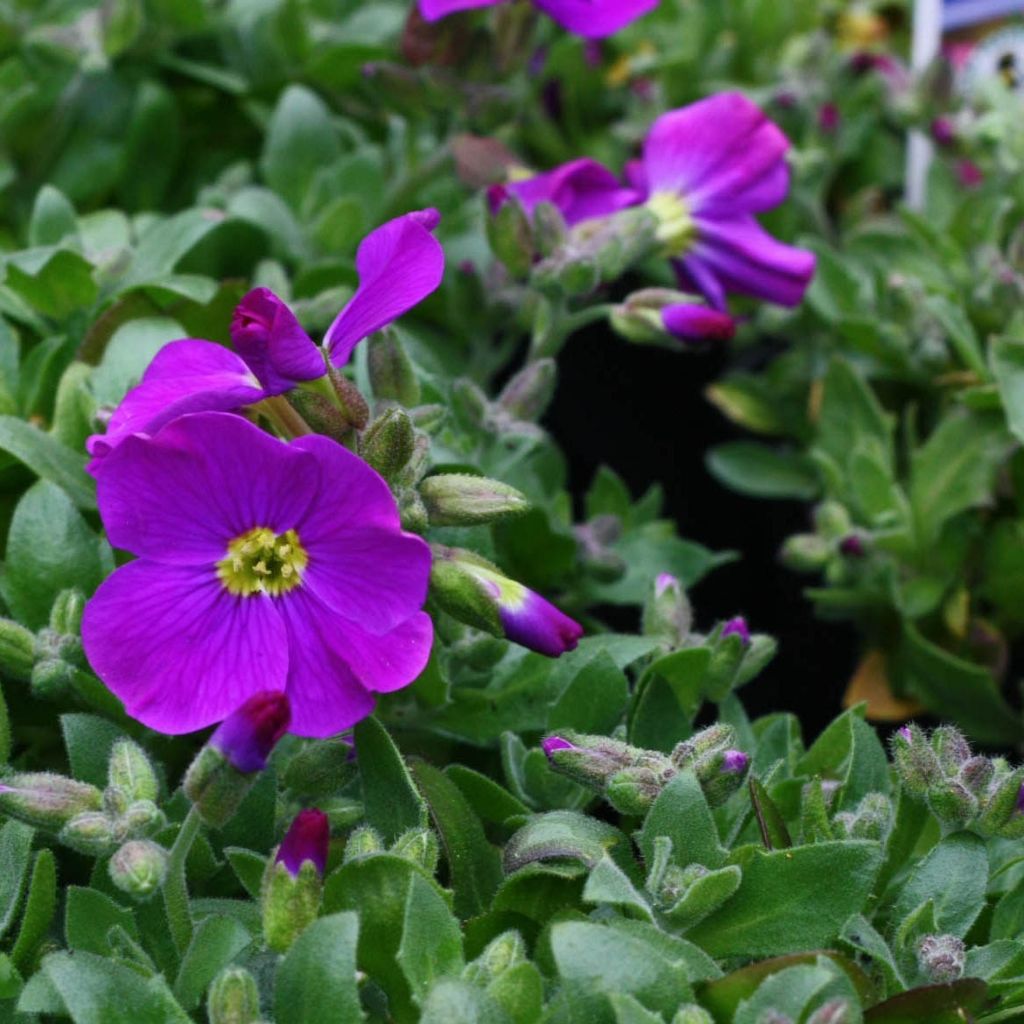

Aubrieta gracilis Kitte Blue
Aubrieta gracilis Kitte Blue
Aubrieta x gracilis Kitte® Bleu (Blue)
Rock cress
This item cannot be shipped to the selected country
Delivery charge from €5.90
Delivery charge from €5.90
More information
Schedule delivery date,
and select date in basket
This plant carries a 12 months recovery warranty
More information
We guarantee the quality of our plants for a full growing cycle, and will replace at our expense any plant that fails to recover under normal climatic and planting conditions.
From €5.90 for pickup delivery and €6.90 for home delivery
Express home delivery from €8.90.
From €5.90 for pickup delivery and €6.90 for home delivery
Express home delivery from €8.90.
Does this plant fit my garden?
Set up your Plantfit profile →
Description
Aubrieta 'Kitte Blue', with its compact and dense growth, very neat appearance, and its blue-mauve flowers of a good size for an Aubretia, is a selection that will be particularly suitable for ornamental use in flowerbeds and hanging baskets. It blooms in spring, forming delightful cushions intensely visited by pollinating insects. The rest of the year, its small evergreen to semi-evergreen leaves will continue to dress the garden. This small perennial is easy to grow in well-drained soil, in full sun. Aubretias are essential when it comes to beautifying a wall, a rockery, a pavement, or a large flowerbed.
The 'Kitte' hybrid Aubretias belong to the Brassicaceae family, and most of them are derived from Aubrieta gracilis, native to the mountainous regions of Greece and Albania. They are rhizomatous plants with a compact and spreading habit, forming cushions that do not exceed 15cm (6in) in height and spread up to a maximum diameter of 30cm (12in). Their semi-evergreen to evergreen leaves in winter, depending on the climate, are a fairly dark green with a slight greyish tint, and have an oval shape. In summer, the foliage may turn yellow if it becomes too dry, without affecting the health of the plant, which will regain its green colour with the first rain. The small leaves end in a point and have roughly serrated margins. In spring, between April and early June, this 'Kitte Blue' variety is adorned with countless small flowers, 1.8cm (1in) in diameter, with four petals of blue-mauve colour and a white throat, very bright. They are very hardy plants, resistant to temperatures as low as -20°C (1°F).
With its spreading and uniform growth, Aubretia is ideally suited for border planting. Not very demanding in terms of soil, as long as it is not too dry, it also thrives in rockeries or on flowering walls: it forms beautiful patches and colourful cascades, like an Impressionist painting. It quickly colonizes the ground, making it suitable for planting on a sunny slope. Between the joints of pavements, in the crevices of walls, Aubretias are fabulous companions for other rockery perennials such as Alyssums, candytufts, and wall bellflowers. They also work well in balconies and hanging baskets, at the base of other plants with an upright habit, and their stems will cascade over the container, concealing its edges.
Report an error about the product description
Aubrieta gracilis Kitte Blue in pictures
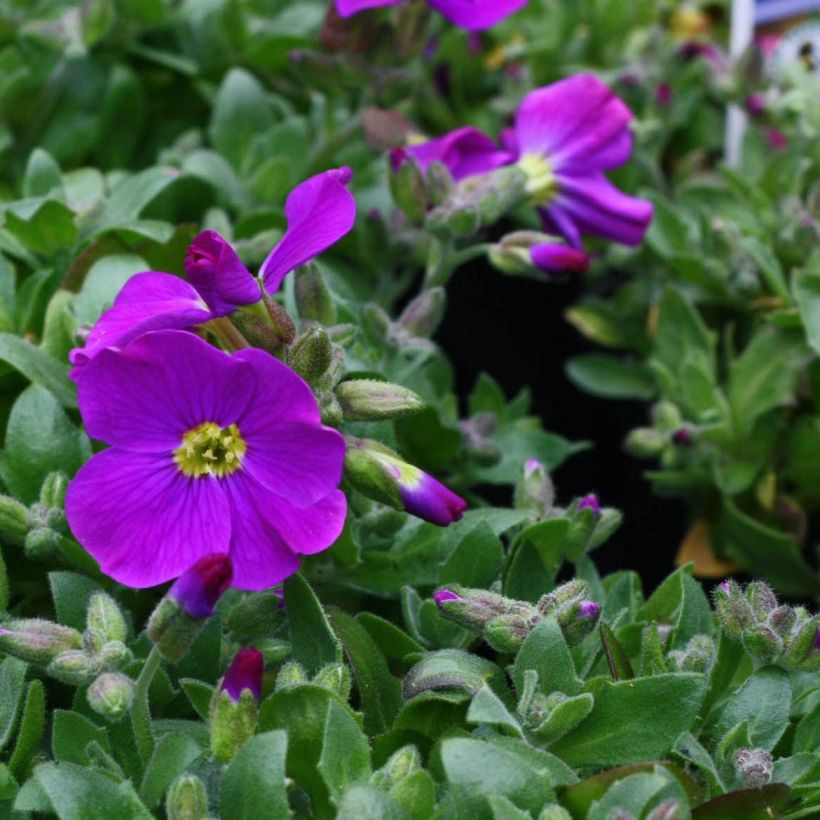

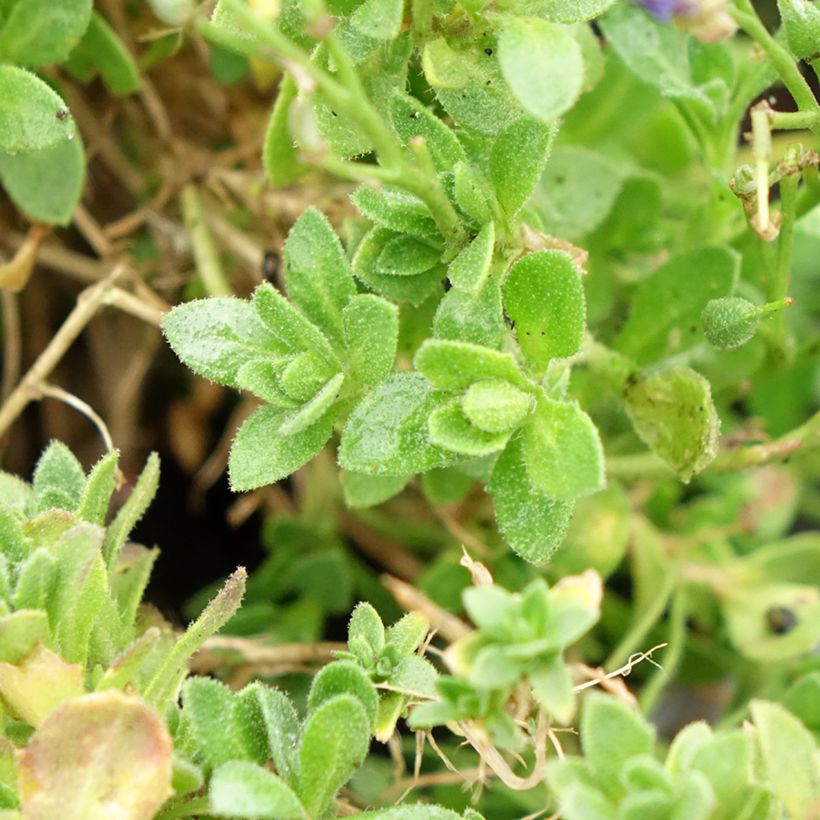

Flowering
Foliage
Plant habit
Botanical data
Aubrieta
x gracilis
Kitte® Bleu (Blue)
Brassicaceae
Rock cress
Cultivar or hybrid
Other Aubrieta - Rock Cress
Planting and care
Aubrieta 'Kitte Blue' is a relatively short-lived perennial. To overcome this problem, make cuttings of the plant every 2 or 3 years, or divide the rhizomatous stump every 2 or 3 years. It will thrive in the sun, in well-drained, even chalky, light soil. In case of prolonged drought, it is necessary to water if you want to prevent its foliage from drying out. If that were the case, however, the plant will regain its green color after the first watering or the first rain. This small plant has no other requirements.
Pot cultivation: plant your aubrietas in good horticultural soil, in a perforated container, with the bottom filled with a layer of gravel or potsherds to ensure drainage. Water your Aubrietas regularly.
Planting period
Intended location
Care
-
, onOrder confirmed
Reply from on Promesse de fleurs
Spring flowering perennials
Haven't found what you were looking for?
Hardiness is the lowest winter temperature a plant can endure without suffering serious damage or even dying. However, hardiness is affected by location (a sheltered area, such as a patio), protection (winter cover) and soil type (hardiness is improved by well-drained soil).

Photo Sharing Terms & Conditions
In order to encourage gardeners to interact and share their experiences, Promesse de fleurs offers various media enabling content to be uploaded onto its Site - in particular via the ‘Photo sharing’ module.
The User agrees to refrain from:
- Posting any content that is illegal, prejudicial, insulting, racist, inciteful to hatred, revisionist, contrary to public decency, that infringes on privacy or on the privacy rights of third parties, in particular the publicity rights of persons and goods, intellectual property rights, or the right to privacy.
- Submitting content on behalf of a third party;
- Impersonate the identity of a third party and/or publish any personal information about a third party;
In general, the User undertakes to refrain from any unethical behaviour.
All Content (in particular text, comments, files, images, photos, videos, creative works, etc.), which may be subject to property or intellectual property rights, image or other private rights, shall remain the property of the User, subject to the limited rights granted by the terms of the licence granted by Promesse de fleurs as stated below. Users are at liberty to publish or not to publish such Content on the Site, notably via the ‘Photo Sharing’ facility, and accept that this Content shall be made public and freely accessible, notably on the Internet.
Users further acknowledge, undertake to have ,and guarantee that they hold all necessary rights and permissions to publish such material on the Site, in particular with regard to the legislation in force pertaining to any privacy, property, intellectual property, image, or contractual rights, or rights of any other nature. By publishing such Content on the Site, Users acknowledge accepting full liability as publishers of the Content within the meaning of the law, and grant Promesse de fleurs, free of charge, an inclusive, worldwide licence for the said Content for the entire duration of its publication, including all reproduction, representation, up/downloading, displaying, performing, transmission, and storage rights.
Users also grant permission for their name to be linked to the Content and accept that this link may not always be made available.
By engaging in posting material, Users consent to their Content becoming automatically accessible on the Internet, in particular on other sites and/or blogs and/or web pages of the Promesse de fleurs site, including in particular social pages and the Promesse de fleurs catalogue.
Users may secure the removal of entrusted content free of charge by issuing a simple request via our contact form.
The flowering period indicated on our website applies to countries and regions located in USDA zone 8 (France, the United Kingdom, Ireland, the Netherlands, etc.)
It will vary according to where you live:
- In zones 9 to 10 (Italy, Spain, Greece, etc.), flowering will occur about 2 to 4 weeks earlier.
- In zones 6 to 7 (Germany, Poland, Slovenia, and lower mountainous regions), flowering will be delayed by 2 to 3 weeks.
- In zone 5 (Central Europe, Scandinavia), blooming will be delayed by 3 to 5 weeks.
In temperate climates, pruning of spring-flowering shrubs (forsythia, spireas, etc.) should be done just after flowering.
Pruning of summer-flowering shrubs (Indian Lilac, Perovskia, etc.) can be done in winter or spring.
In cold regions as well as with frost-sensitive plants, avoid pruning too early when severe frosts may still occur.
The planting period indicated on our website applies to countries and regions located in USDA zone 8 (France, United Kingdom, Ireland, Netherlands).
It will vary according to where you live:
- In Mediterranean zones (Marseille, Madrid, Milan, etc.), autumn and winter are the best planting periods.
- In continental zones (Strasbourg, Munich, Vienna, etc.), delay planting by 2 to 3 weeks in spring and bring it forward by 2 to 4 weeks in autumn.
- In mountainous regions (the Alps, Pyrenees, Carpathians, etc.), it is best to plant in late spring (May-June) or late summer (August-September).
The harvesting period indicated on our website applies to countries and regions in USDA zone 8 (France, England, Ireland, the Netherlands).
In colder areas (Scandinavia, Poland, Austria...) fruit and vegetable harvests are likely to be delayed by 3-4 weeks.
In warmer areas (Italy, Spain, Greece, etc.), harvesting will probably take place earlier, depending on weather conditions.
The sowing periods indicated on our website apply to countries and regions within USDA Zone 8 (France, UK, Ireland, Netherlands).
In colder areas (Scandinavia, Poland, Austria...), delay any outdoor sowing by 3-4 weeks, or sow under glass.
In warmer climes (Italy, Spain, Greece, etc.), bring outdoor sowing forward by a few weeks.

































